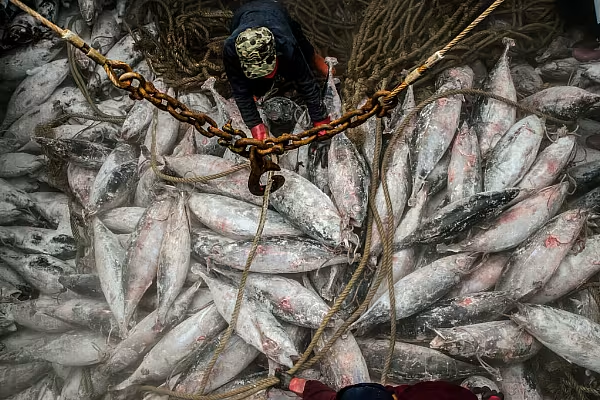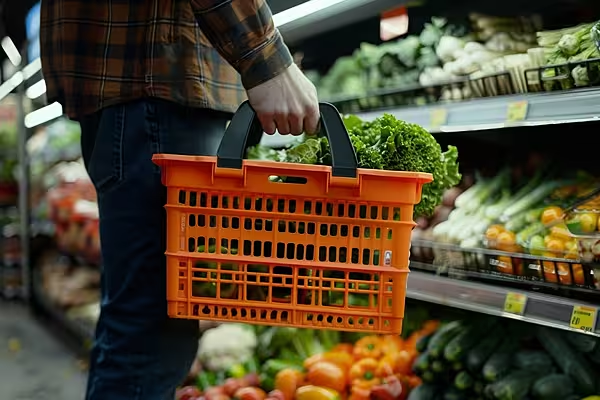Not enough is being done around the world to ensure that tuna is being fished at sustainable levels, says Nick Peksa. This article first appeared in ESM's July/August 2023 edition.
The parties of the Indian Ocean Tuna Commission (IOTC), which include a number of coastal states along the Indian Ocean and distant water-fishing entities, such as the European Union, gathered in Mauritius in May, amid growing concerns that the yellowfin tuna population in the Indian Ocean may face a collapse as early as 2026.
However, during the annual meeting, IOTC members failed to make significant progress in implementing crucial measures – including reducing annual catches and imposing limitations on the use of harmful fish-aggregating devices (FADs) – to protect the declining yellowfin tuna population.
Tackling Overfishing
Back in 2015, the IOTC had already classified yellowfin tuna as overfished, but the intergovernmental regional management body has been ineffective in curbing overfishing, pushing the stock closer to collapse.
Objections raised by the European Union, which has the largest share of yellowfin tuna catches in the Indian Ocean and heavily relies on drifting FADs, played a role in undermining the ambitious plan adopted by the IOTC in February to restrict FAD usage.
Regrettably, the meeting did not yield any progress in sustainable management efforts for skipjack tuna populations, either. Similar to yellowfin and bigeye tuna, skipjack tuna is also being fished at unsustainable levels, as recognised by the IOTC.
Commercial Interests
Critics argue that the European Union – operating a purse-seine fleet in the region and historically dominating the yellowfin tuna catch – prioritises the commercial interests of its fleet over sustainability concerns.
Nonetheless, progress was made in addressing the overfishing of bigeye tuna. The regional management body acknowledged that the Indian Ocean bigeye stock was overfished in 2022. During the annual meeting, the parties agreed to a 15% reduction in the permitted annual catch of bigeye tuna, compared to the levels of 2021.
So, with declining tuna populations, how are the markets faring?
Skipjack Tuna – Thailand
Fishing conditions in the Western and Central Pacific (WCP) region continue to be challenging. The decrease in international crude-oil prices has resulted in lower marine fuel costs for purse-seiners, which is beneficial. However, vessel operators are facing various overhead costs that are eating into their profits. The poor fishing conditions have compelled vessels to embark on longer trips to catch tuna, leading to increased expenses for fuel and wages.
Thai vessels seeking to fish in the waters of the Parties to the Nauru Agreement (PNA) also encounter a significant overhead expense known as the Vessel Day Scheme (VDS). To fish in PNA waters, boat owners are required to pay between US$10,000 (€9,100) and US$14,000 (€12,740) per day. Considering that vessels have been catching an average of 17 tonnes of skipjack daily since January, the cost of permits to catch tuna amounts to approximately $706 (€642) per tonne of tuna caught.
As a result, Thailand’s tuna stocks are being supplemented by other carriers arriving from the Indian Ocean. While the price of skipjack tuna has increased, there is a reduction in demand, due to the elevated price levels.
Eastern Pacific Ocean
In contrast, fishing conditions in the Eastern Pacific Ocean (EPO) continue to be favourable. However, fish prices have remained stable due to strong demand from Latin American markets and a limited supply of deliveries from the Western Pacific. Prices of skipjack and yellowfin tuna remain steady in this region.
Recently, the waters of the EPO have been experiencing higher temperatures, indicating the potential onset of the El Niño phenomenon, which marks the end of a prolonged La Niña event. These conditions have been particularly prominent along the Ecuadorian coast, where sea surface temperatures have been approximately 2.23 degrees Celsius higher than the region’s average for this time of year. If the warmer temperatures persist, tuna-fishing in the region may be impacted.
It is important to note that, historically, during La Niña – characterised by cold ocean surface temperatures – higher catches are often observed, while El Niño tends to reduce volumes. This is because, during El Niño, skipjack and yellowfin tuna gather less often around FADs, and mature tuna schools tend to swim at greater depths, making them more challenging to detect and catch.
In the first quarter of 2023, skipjack tuna volume in the region reached a ten-year record of 106,000 tonnes. A significant portion of the catch, totalling 65,312 metric tonnes, was captured by Ecuadorean-jagged seiners. However, if El Niño conditions intensify across the Pacific, this situation could potentially reverse, thereby impacting raw-material prices in Manta and other affected areas.
Canned Fish In Europe
European skipjack prices have risen due to a shortage in supply from the Atlantic Ocean and competition from the Thai market for Indian Ocean cargo. The prices of cooked single-cleaned skipjack loins have also increased, in line with the global market price for whole skipjack. However, the price of yellowfin tuna has decreased, due to higher catches and lower demand.
The drop in price was primarily driven from the EPO region, with higher catches in Mexico, Ecuador and Venezuela. One source in Southern Europe noted that the price correction is not a sharp decline, but, rather, a slight adjustment.
According to various sources, yellowfin tuna prices in Europe have fallen to around €2,800 (US$3,000) per metric tonne, which represents a decrease of approximately $100 (€91) to $150 (€136.50) per tonne, compared to the previous month.
In Italy, slower demand has been observed, due to the elevated costs of tuna fish and olive oil. Italian canneries are struggling to maintain competitiveness as raw-material prices rise. Additionally, retailers are unwilling to accept price increases, citing sluggish sales of canned products. Consequently, the demand for tuna is low, leading canneries to purchase only essential quantities. Some companies may also extend their summer closures.
Ending Thoughts
It is disappointing to learn about the number of EU companies placing their commercial needs above the sustainable needs of tuna. According to Greenpeace, current and proven environmentally responsible fishing methods include pole and line, trolling, handlines, and free school (or FAD-free) purse-seine net fishing. This means that rejecting the recommendations of the IOTC to reduce or ban FADs really feels like short-term thinking.
Also, currently, only 0.1% of tuna brought to market is farmed. Should we all look towards countries like Indonesia, which is actively looking to develop a farming infrastructure for tuna?
For more information, contact nick.peksa@cost-insights.co.uk.














